I met Kristine and Colin Poole for the first time at Spectrum Fantastic Art Live 3 where they won the Silver Dimensional Award for Spectrum 21. Its impossible not to sense the joy they take in each other and the art they make together. They are open, generous and intensely curious. With all the emotional and intellectual focus they bring to their work, there is an underlying innocence that speaks directly and intimately to the viewer. Yeah, and they’re a good looking couple, okay? But I bet one of them snores.
Our ceramic sculptures are generally life-size, a fact that dramatically affects one’s interaction with them in real life, yet is not readily apparent in photos.
To give a sense of her size, this is an image of us putting the finishing touches on Fauna in the clay – there is a tremendous physicality involved in working with water-based clay at this scale. Even built hollow as she is, the wet piece weighs more than either us. It really seems as if we are dealing with another being, one that demands attention because she takes up so much physical space. (photo by Dave Robinson)
auna is a goddess from Roman mythology most frequently seen as the wife and/or sister of the more familiar Faunus (Pan in Greek mythology). Fauna, according to some sources, is seen as being not only a goddess of the woodlands, but also as representing the wild sexuality of women, as an expression of fertility and life force. It is this aspect of the goddess that we chose to depict.
The view most frequently seen is this one, from the front where we see the dimension of the face, the curve of the horns and the lifted attitude of the torso. Given water-based clay’s aversion to armatures, cantilevering and dynamic limbs, we have to work to create dynamic tension in more subtle ways. The widely spread legs, the slight lift of the left hip, the contrast between the relaxed right arm and the more provocative left pressing into the hip, all contribute to her come-hither attitude. A dancer’s trick of lifting and stretching the upper ribcage while rolling the shoulders back and down in counterbalance creates a further sense of latent energy. Even in this seemingly stable pose, there is a challenge to getting this much wet clay (the bulk of her weight is in the upper body) to suspend directly over… well… nothing. The weight of her torso pushing down kept encouraging her to do the splits… literally.
Moving around the sculpture, this is one of our favorite views, insofar as how we envisage such animal beings to be. Although the foreshortening of the face and horns is unfortunate for a money shot, we find the head-on directness of her stare from this angle to be both challenging and inviting. When we imagine stumbling across a goat-creature such as this in the woods, we know she would meet our intrusion with the sort of in-your-face bravado that you really only get from this angle.
Looking closer from this side, you can see some of the yummy fleshiness that gives this girl her innate sexiness. Her fingers lightly push into the flesh of her hip, just above the buttocks, emphasizing the femininity of her form and providing a very humble nod to one of our favorite sculptural inspirations: Bernini’s ‘Rape of Proserpina.’
Farther around Fauna, the view from the left side introduces a certain elegance in her form – the swoop of the horns emanating from her head are reminiscent of a crown, the curve running from her neck through her torso continues to play with the “S” shape begun in the horns. The somewhat gazelle-like quality of this angle perhaps serves to emphasize her nature as the graceful queen of the woodlands rather than the sensuality of the frontal views.
A closer look at the head and horns reveals hints of the surface textures and details we will find more of in the back of the sculpture.
In the back view, her nubile nature is accentuated by the contrast of her forms – in this case, between the more muscular upper back and arms and her fuller hips and bottom. Visually, we enjoy the contrast between the more refined areas of flesh and the textural areas that maintain the marks of the maker.
A closer look at her feet reveals that they are not pretty and soft – they are the feet of a creature that dwells outside and runs fleetly. We love doing feet, particularly the bottoms. We feel there is so much character in the folds and wrinkles, the way the toes press into and around each other.
Also from the back, more of the textural details begin to become apparent. We blend the human and animal forms using ‘directional smooshes’ (thanks to Tony Cipriano for the great technical descriptive – probably of Latin origin) and texture to create a chimerical quality, to have the forms look like they really belong to one creature. With Fauna, this texture also serves to emphasize her character as a nature creature, lightly suggesting leaves and flora.
Something that is obvious when viewing the sculpture in real life, but which barely translates in full-figure images, is the very subtle coloration which covers the entire sculpture, shown here on her bottom. This softens her surface and again relates her to woodlands, moss, lichen, and growing things. Fauna was seen as one who could foretell the future to those who dwelled awhile in her forests. To us, this almost crystallized pattern over her surface reminds us a bit of Ray Bradbury’s “Illustrated Man.” We can imagine looking into the surface of her skin and seeing the patterns shift and change as she reveals what is to come.
We chose to represent this goddess with a goat’s head rather than the more commonly rendered “horns on a human” version, as we felt that for her particular nature, maintaining this animalistic aspect allowed a bit more freedom in presenting her carnality (and, we confess, we thought it was cool).
Fauna was talking to us the entire time we were working on her (living in Santa Fe, we can get away with saying things like this). In the dance of creativity, it seems that sometimes we lead, sometimes the creation leads and we are along for a glorious ride. In Fauna’s first “incarnation,” we wanted to emphasize the physicality of her nature so chose this intense, highly saturated surface. While we received plenty of feedback regarding her “hotness,” we found that the vibrant color became the focus, and the sculptural details were lost in the glow (bright red may work for Hellboy but is a bit jarring for this quiet goddess of the woodlands). So, she morphed, as any good goddess should be able to do, into her current form. As if remembering her beginnings, hints of the original coloration peek through the transparent layers, something photos never capture.
In a single image, it is difficult capture these subtleties. Standing in front of a sculpture, the mind can perceive the scale, the entirety of the piece and the subtleties of the surface, all within moments. Being able to move around and slowly dance with the piece from all its views completes the whole story. Perhaps the 2-D image just serves as the initial invitation.


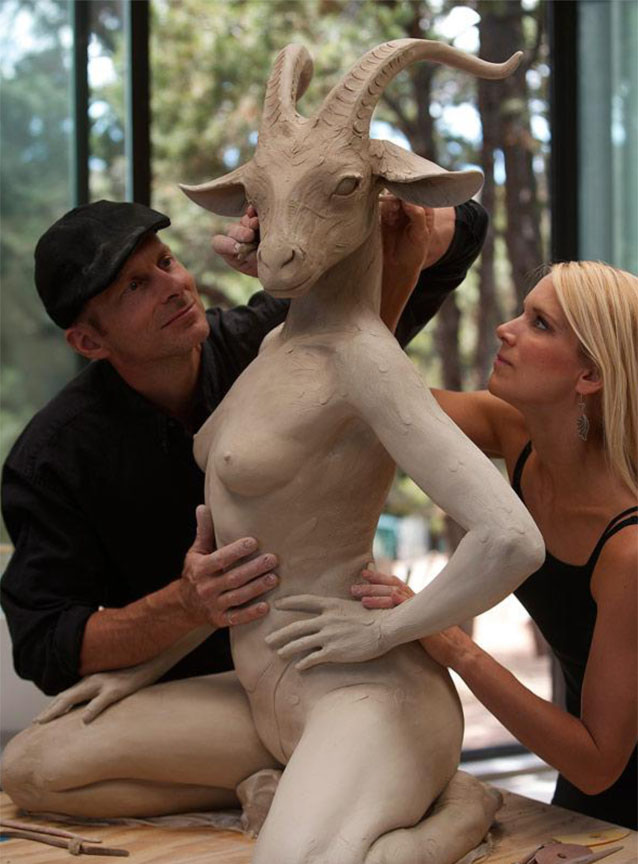
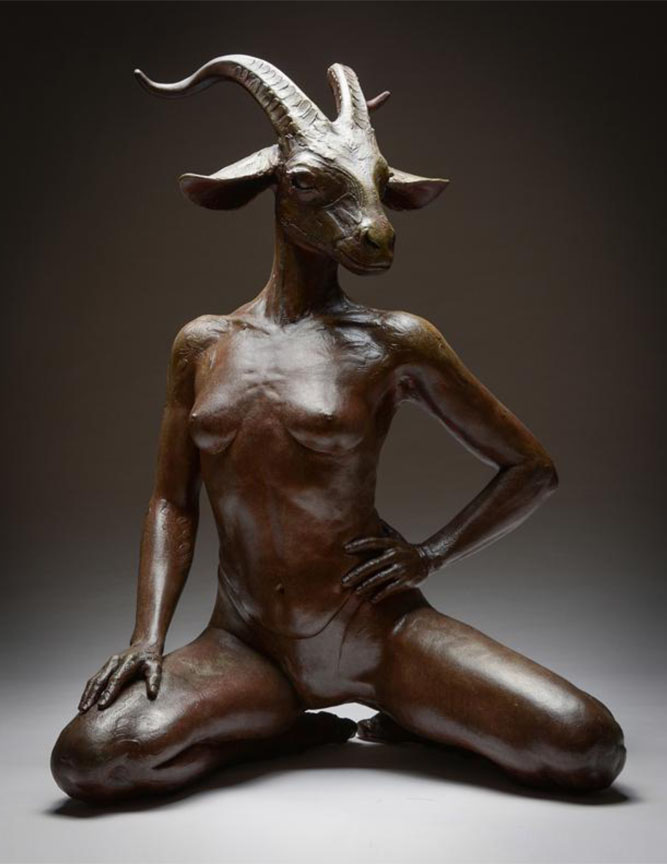

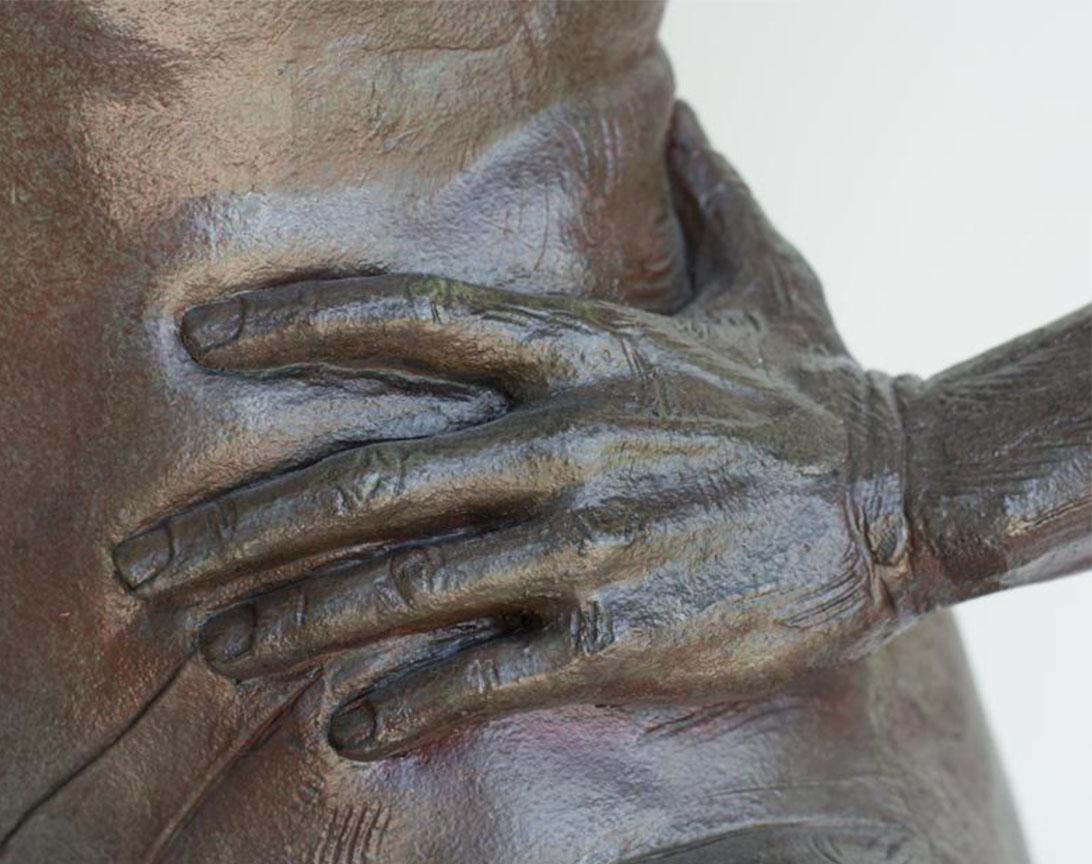
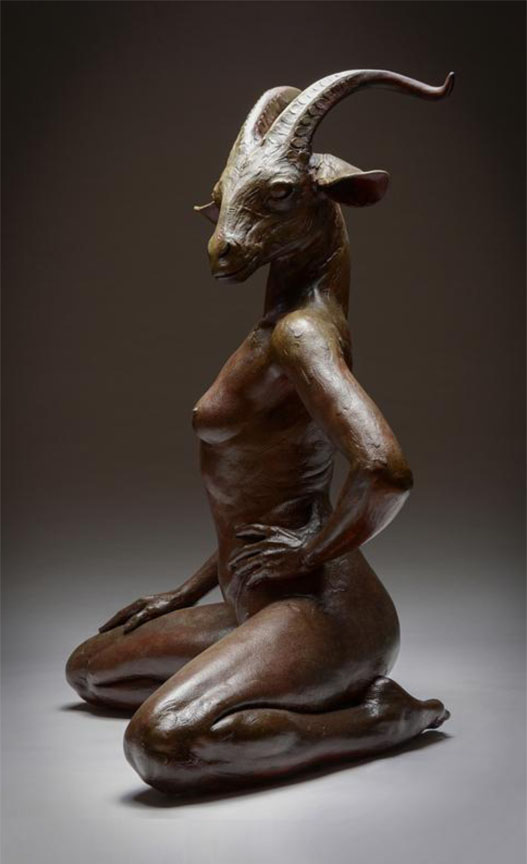
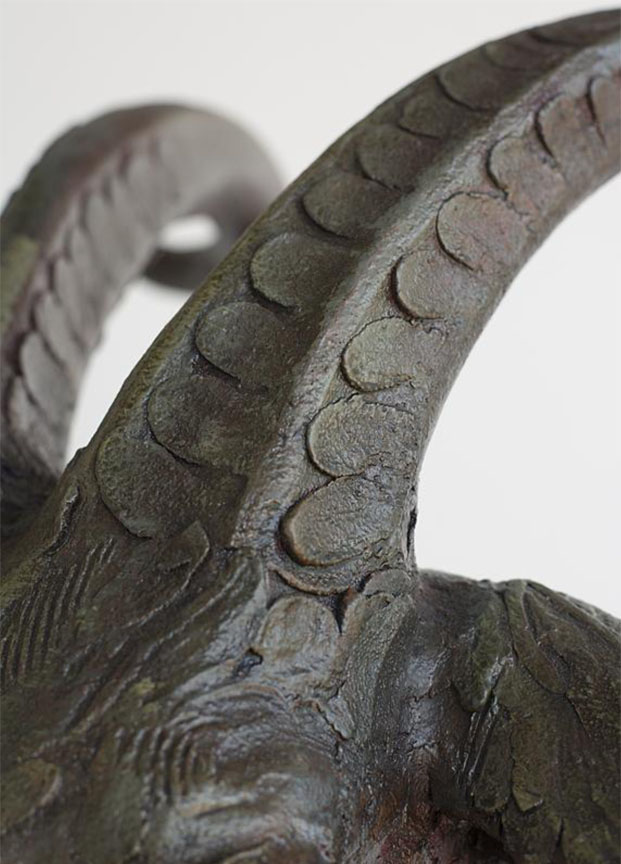
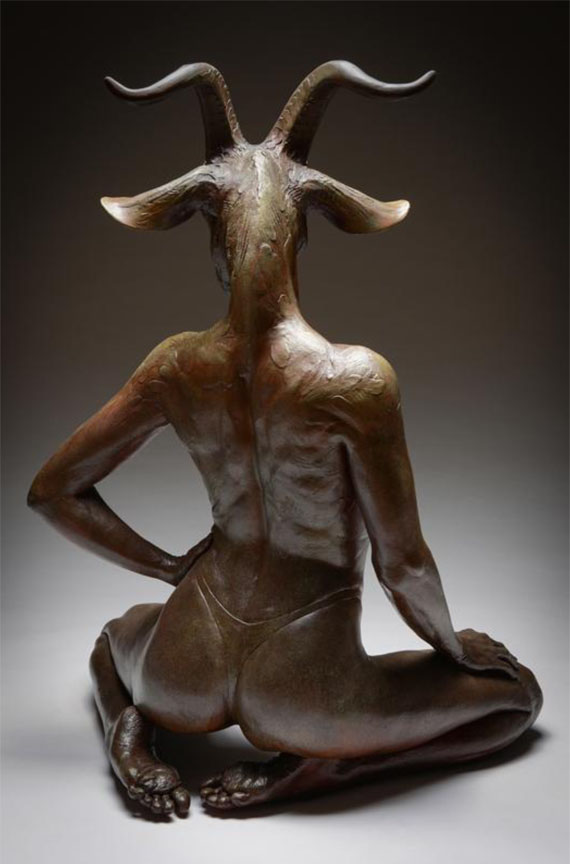
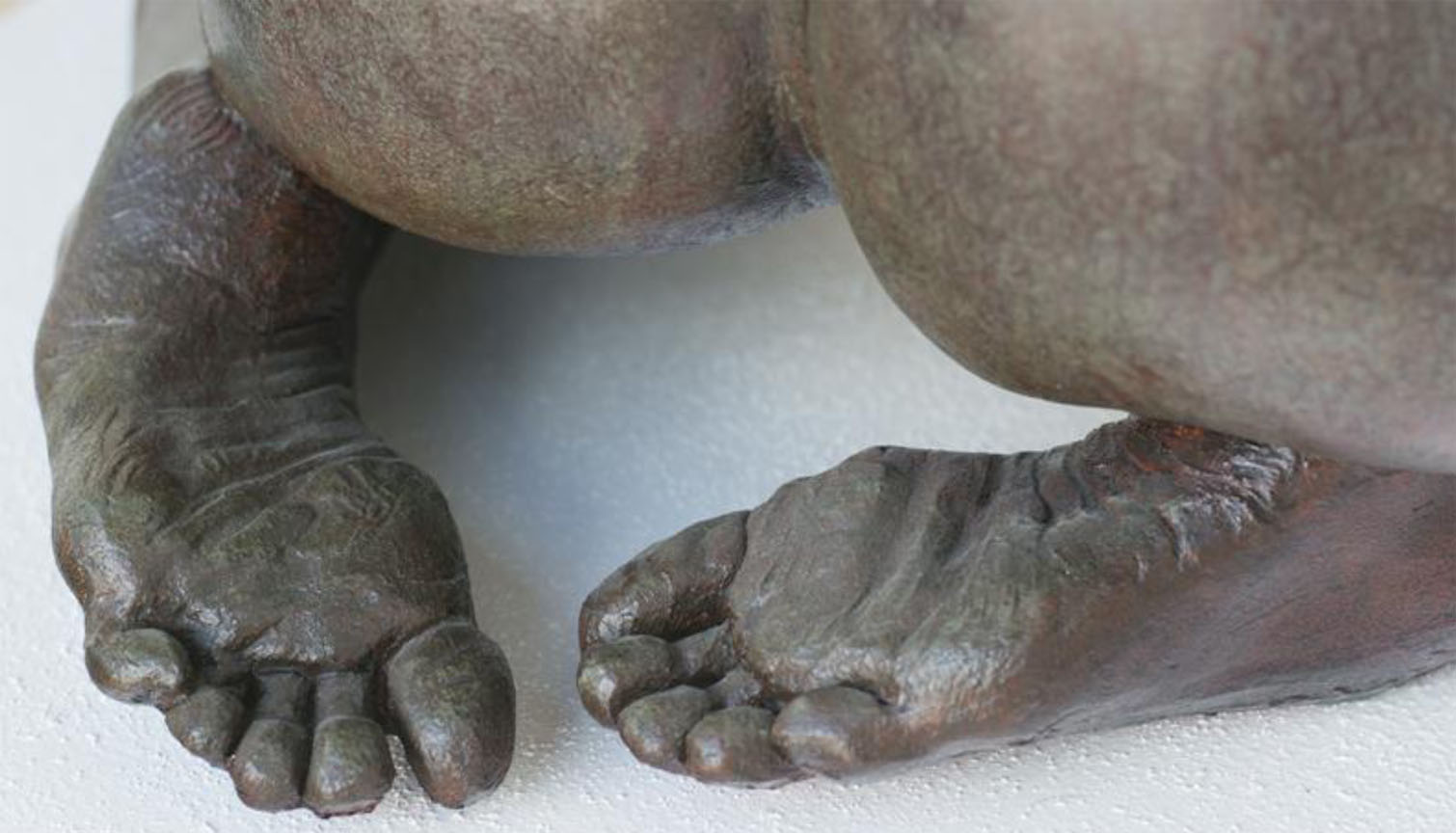

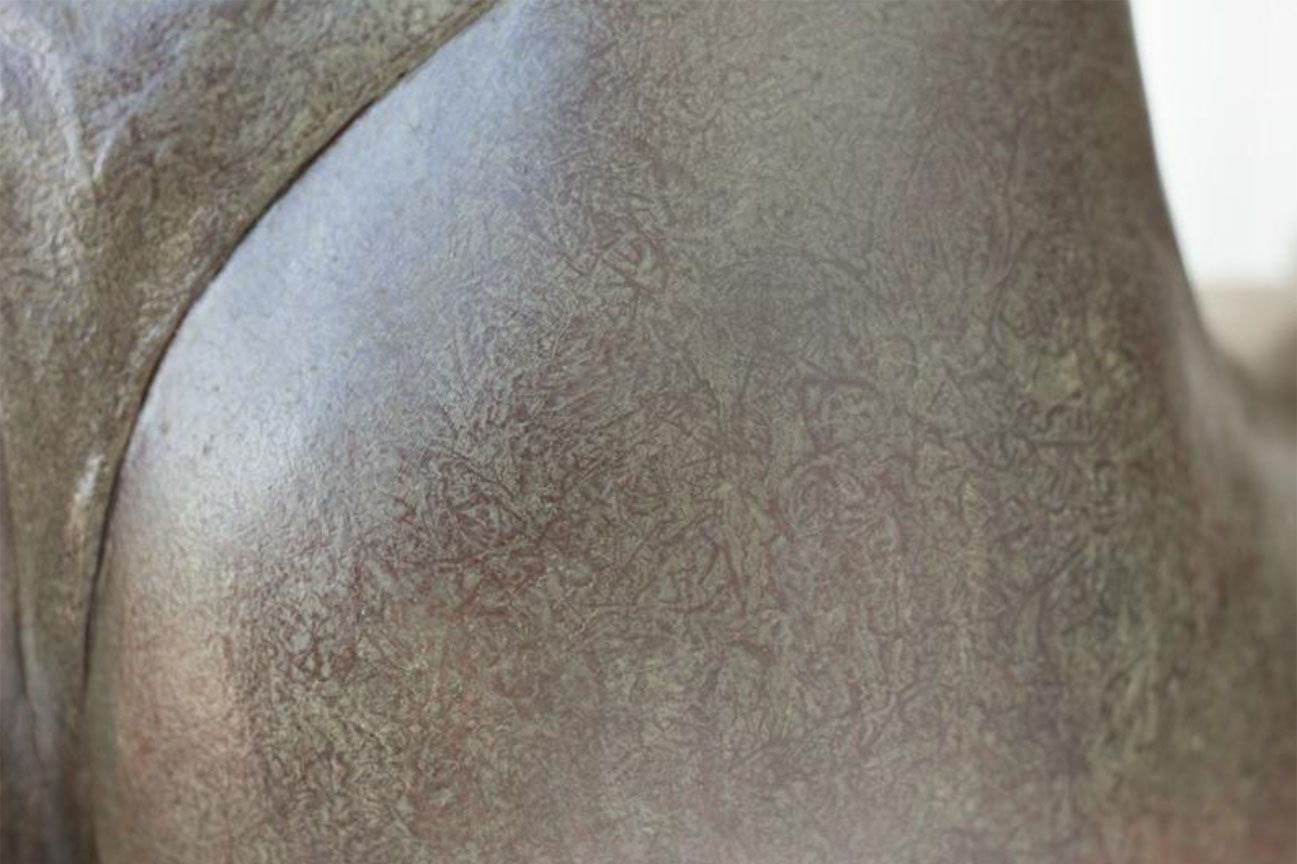
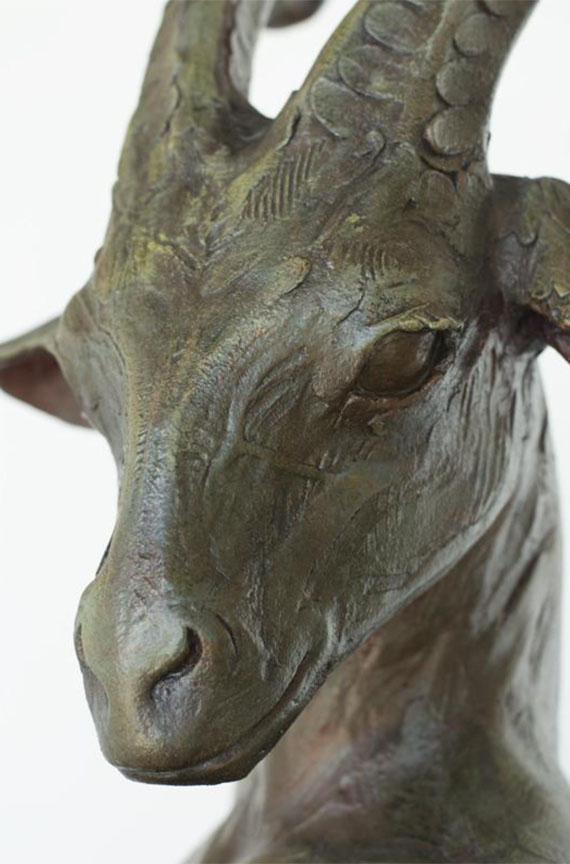
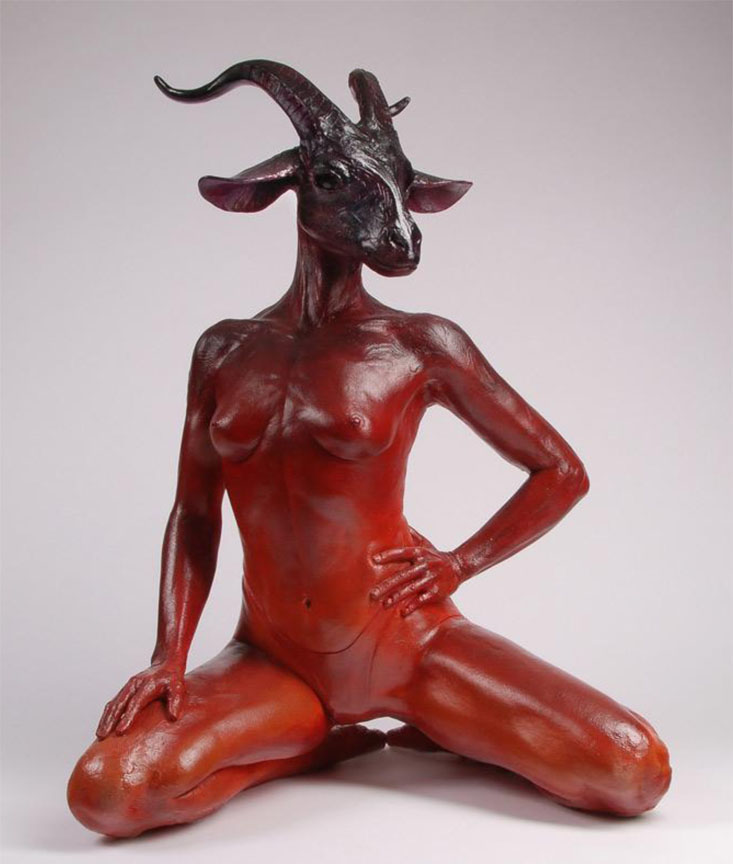

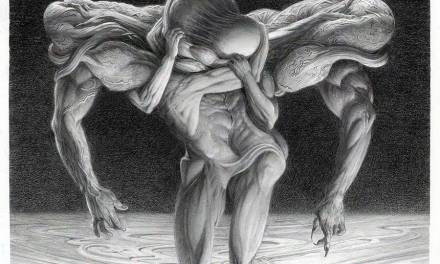

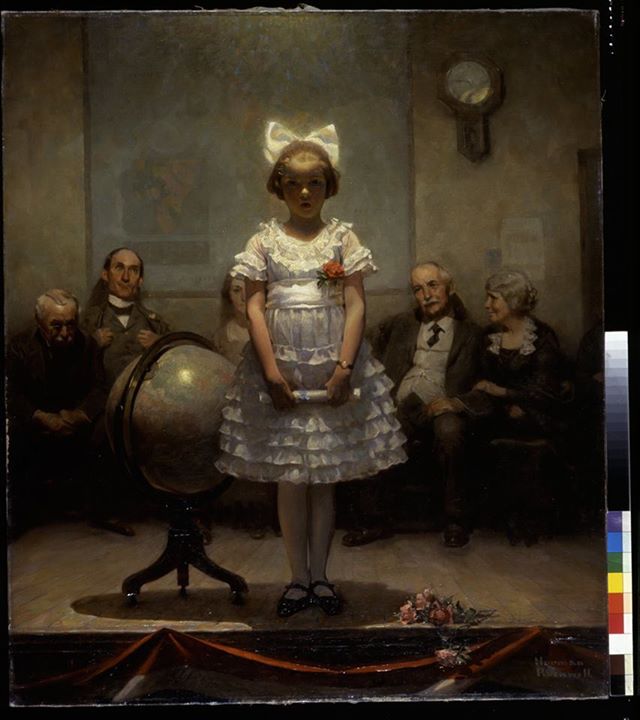
This post makes me want to put down my keyboard and take up sculpting. Love the “smooshes”. Is she viewable to the general public?
She's lovely. And I agree, the subtle greens and browns are much more appropriate for a faun.